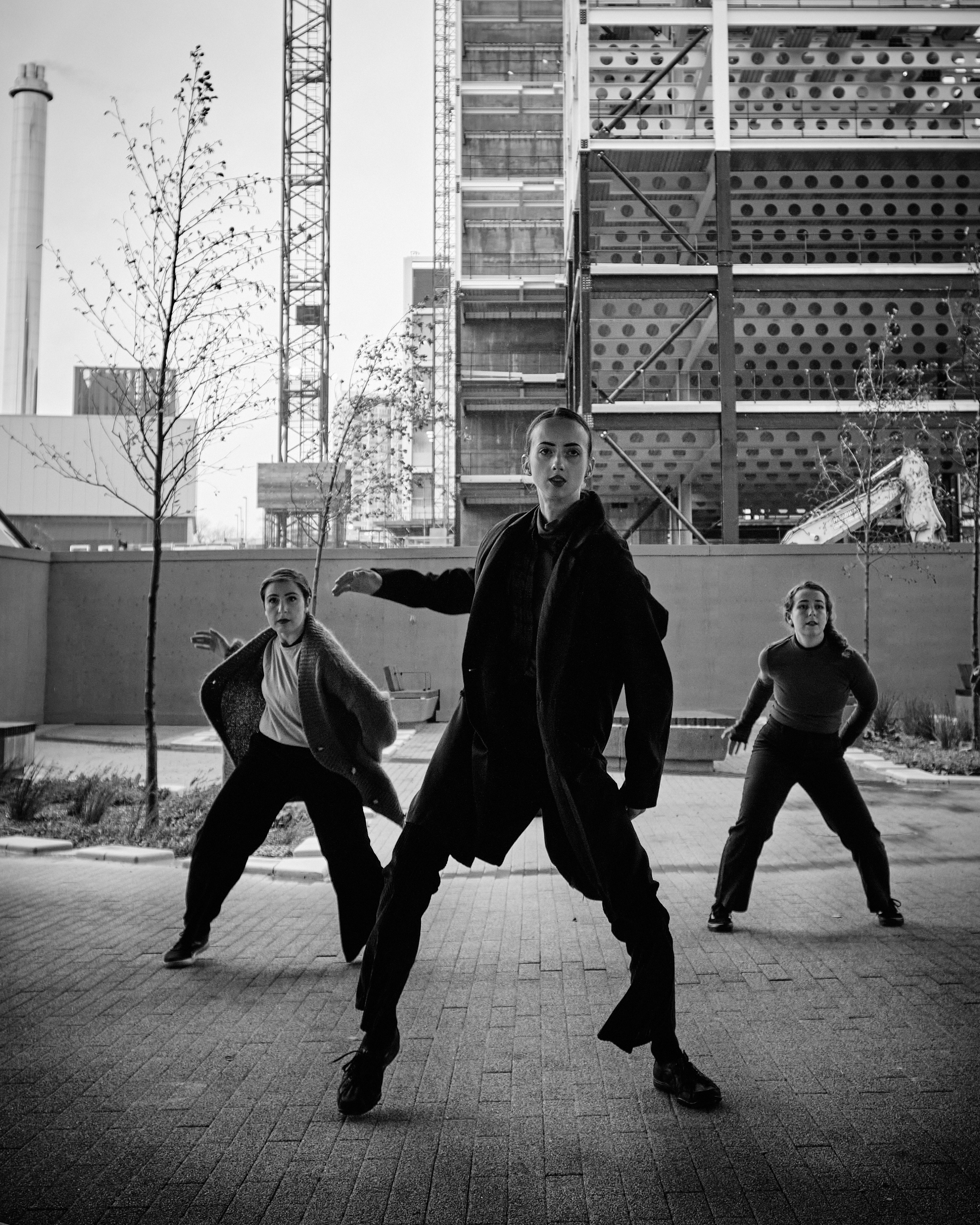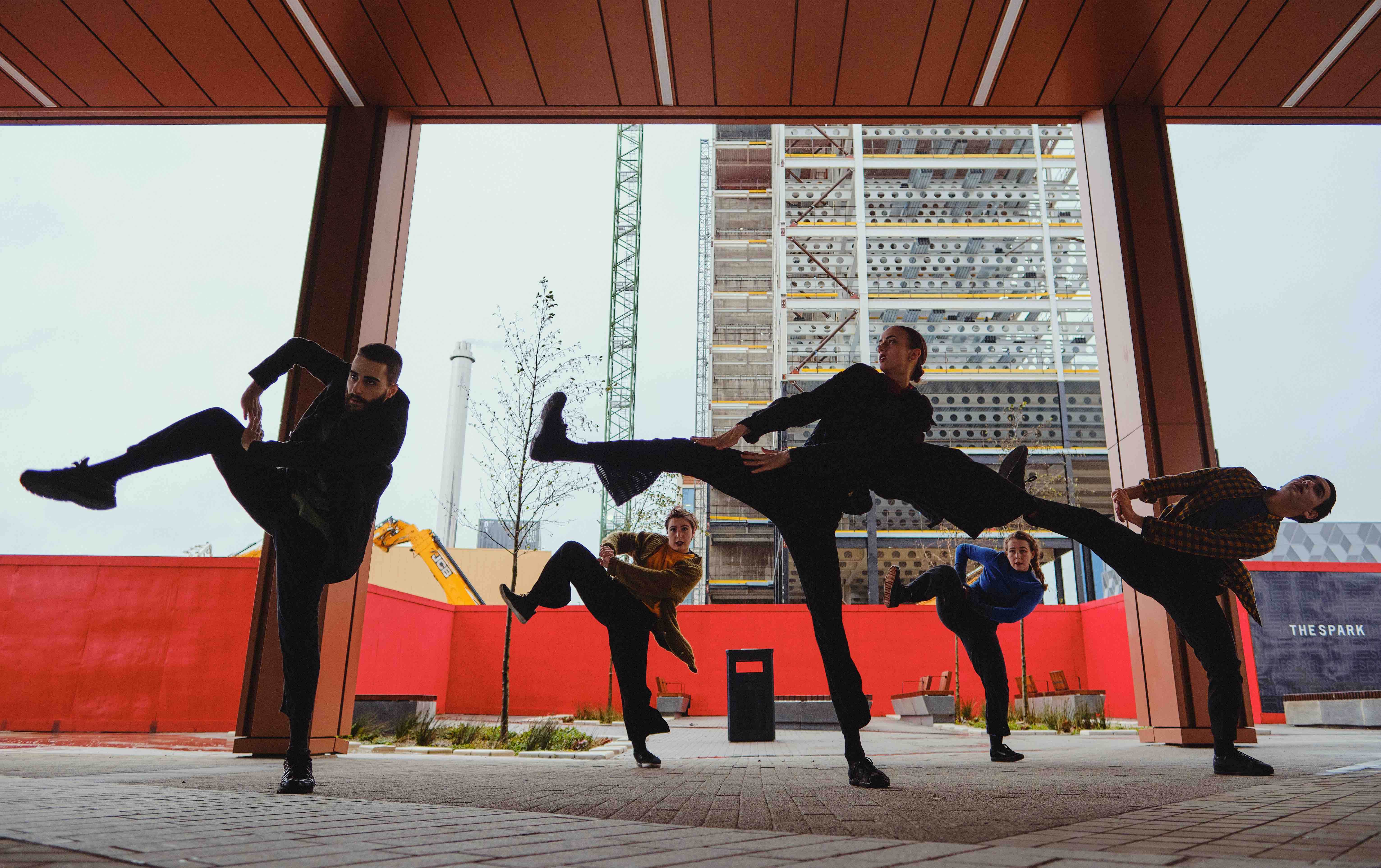Words by Katie Hagan.
“To transition to a sustainable world, we need to tread more lightly on the planet.” — Professor Andy Purvis. Inspired by the crisp lucidity and aptness of these words, Dora Frankel Ensemble’s Tread Lightly on the Planet is set to be an evocative, stratified dance work that asks questions about and gathers snapshots into contemporary life. A synergetic endeavour by the company who are reuniting with close collaborator, the composer Peter Coyte, dance art journal caught up with Dora to talk about the work and how in the studio, the absence of what’s familiar gave way to new creative pursuits.
DAJ: Tread Lightly on the Planet is the third work in a dance trilogy about climate change and the Romantic painter, J.M.W. Turner. You made the first work in 2013 and the second in 2019. How did Tread Lightly arrive so quickly?
Dora: After finishing the great success that was the second work Figures in a Floating Landscape, we felt we’d found ourselves as an ensemble. The ideas were rolling; Peter’s music was there; and the dancers Luca, Zara, Becky, Livia and Giacomo radiated energy.
This energy coincided with the introduction of Dance City’s new artistic director, and the programmer, Phil Douglas. Phil is doing really great things. I was invited to make a piece for the 55+ ensemble Boundless, which is one of the fewest companies of its kind and a new initiative at Dance City. I was there during the summer and autumn and once I’d finished, I had this urge to keep going. Even though I’d had a terrible accident around that time, I was adamant that Dora Frankel Ensemble was going to make Tread Lightly! We were in the studio right before the third national lockdown and it was wonderful.
DAJ: What was it like to return to the studio?
Dora: I would say the process was the same but different. We certainly found new ways to connect. We were very responsive to the Covid restrictions, but the power, the creative power and sense of trust was extraordinary. The strong movement of the piece even though things felt unknown was miraculous. The dancers, Livia and Luca, taught pro-class and they were very caring and giving of their time. We were very proud.
DAJ: How did it feel to navigate the choreography without touch?
Dora: Even though there isn’t physical touch in Tread Lightly in its current form, there is the memory of it. I tried new compositions and ways of doing things in line with the dancers’ boundaries, who were absolutely fierce and never doubted nor hesitated. Each of them found stunning movement.
I enjoy the image of trains moving past one another; the illusion of touch is there without it being evident physically. This is applicable to movement. You can use devices to create an illusion, one of which is a duet. One dancer is in the upstage left corner, the other downstage right. You move together so you’re echoing and remembering. You can also share movement and move in unison, and do tasks to get the dancers to connect with one another.
We made 35 minutes of material over the course of a week. During the sharing someone commented that it was work they’d never seen from me before. In a way, the absence of what we once saw as normal has led to the engendering of something very provocative. Hopefully, when it is safe to do so, we can bring touch to Tread Lightly. How unusual that will be!

DAJ: Does the sound contribute to the new sense of touch?
Dora: Tread Lightly has rhythmically dynamic sections and quieter parts that culminate in a sound that’s sensory and experiential. It may have resulted in that because various sounds were pulled together quite abstractly.
I gathered lots of textures during a sound walk. I drew on Marxist theorist, Guy Debord’s ‘Dèrive’ phenomenon which is a mode of experimental behaviour where you see aspects of an urban space. On this sound walk I wasn’t seeking Romantic nature, I randomly recorded sound. Peter recorded a construction site and used sounds from a 1989 outdoor piece I did in Sweden called Harlequin’s Day.
DAJ: How do you feed into the themes of Turner and the environment?
Dora: We were drawn to Turner’s perception of the early Industrial Revolution, especially the depiction of industry in ‘Keelmen Heaving in Coals by Moonlight’ painted in 1835. Turner was so radical about the dawning of the revolution and I noticed the similarities to where we are now.
One of the things that struck me was how he saw Venice. He perceived it as a shadow of what it once was in the 16th Century. At its highpoint, Venice was the intersection between Christian and Muslim faiths; there were several mosques and it was a real hub of art and trade. It was nomadic yet energetic, a real melting point of cultures.
Originally, we had planned to go to Venice, although that didn’t happen for obvious reasons. I daresay Venice will feature in some capacity, but at the moment Tread Lightly has followed another course looking at plastic, degradation, climate change and the loss of habitat. It’s a real interface between art and science.
Whereas Figures in a Floating Landscape had a narrative arc, this one feels like it’ll be more abstract. It’s composed of a series of events clustered together around a central evocation. It’s a moving montage.
When people watch it, I hope they will see how things connect and inform one another. So many audiences try to solve dance like it’s a 1+1 equation instead of thinking: ‘Oh that bit was about Y and I love how Y made me think about X’. I’ll be really pleased if someone says to me that Tread Lightly made them see the environment in a different way.
DAJ: How do you feel about the future?
Dora: It’s a really hard time for independent artists, it has always been. My sister, who is a retired sociologist, laughed when I said indy dancers are being asked to be more entrepreneurial — she said we’ve been doing that for years! When you hear these outside perspectives, it puts it into focus how much we jump through hoops and how so many of them are getting smaller.
DAJ: Arts Council is providing a lifeline. We need other alternatives that provide more support to alleviate the burden on ACE!
Dora: Culture is essential to our lives. At the moment we desperately need more culturally aware and diverse politicians.
In the dance industry we also need Black female choreographers to be platformed and amplified. Gender parity is completely off kilter. Women shouldn’t have to put on men’s clothes to rise up the ranks to senior positions.
Images: Luke Waddington.
About Dora Frankel Ensemble: Dora Frankel Ensemble has existed since 2019. We are an international, age and sexually diverse group of creatives: dancers Luca Braccia, Giacomo Pini, Becky Horne, Livia Massarelli and Zara Sands with composer Peter Coyte, musician Martin Elliott and costume designer Kate Collins. We are supported by Production Manager and Lighting Designer Kirk Sim. Driven by a unique vision and aesthetic and the knowledge that dance is important on many, many levels we create live dance and film events and performances in relevant issues steeped in our shared love of the performing arts.
